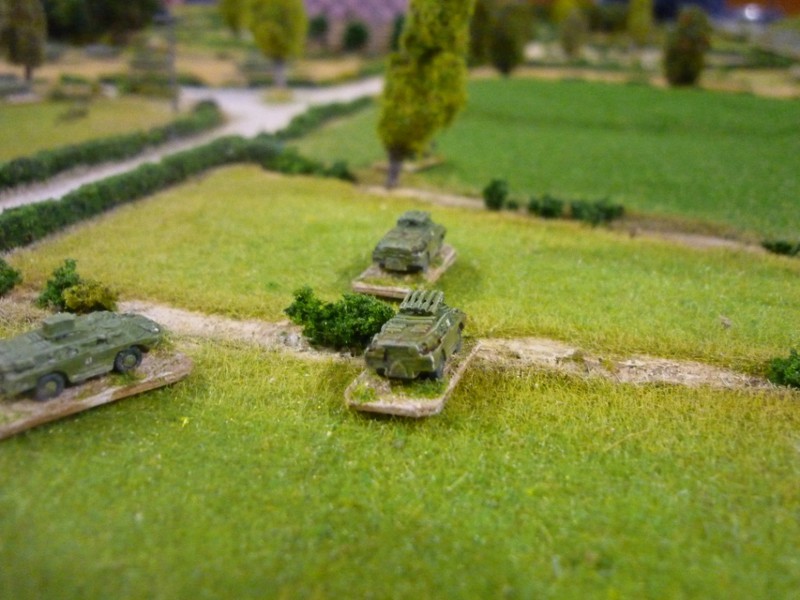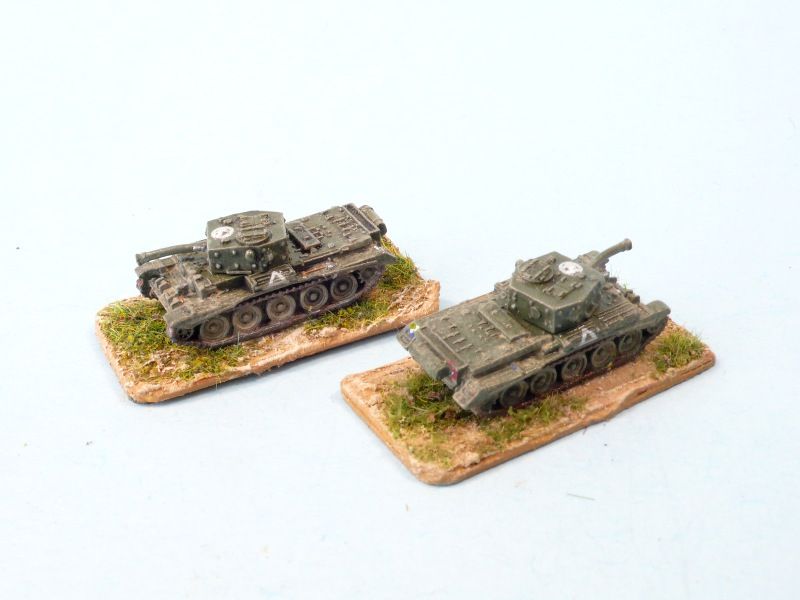I'm about to start painting my modern Israeli armor and had a quick question about weathering and which would be the more effective technique; pigments or washes.
My first thought was a sand colored wash over the IDF Green basecoat, but then I started thinking about pigments and after seeing a number of YouTube videos, my hesitation to this has waned.
Or am I overthinking this?
Painting Technique Question
Moderators: dnichols, GHQ, Mk 1
-
kfeltenberger
- Posts: 71
- Joined: Sat Jul 26, 2014 12:36 am
- Location: York, PA
- Contact:
-
kfeltenberger
- Posts: 71
- Joined: Sat Jul 26, 2014 12:36 am
- Location: York, PA
- Contact:
-
Gort
- E5
- Posts: 167
- Joined: Wed Jan 11, 2006 5:51 pm
- Location: SW Ontario
Interesting. I have never had any luck using an airbrush to achieve that dusting effect at this scale. It just comes out too splattery - it's OK on 1/35 or 1/72 stuff, but not on 1/285. I use pigments. I have several sets of Tamiya pigments and they are definately not too coarse. I use a microbrush to scrub the pigment onto the surface of the model. This gives a dusty finish combined with the look of a dry brush. Then I pin wash the model and re-apply the pigment as needed to get the effect that I want. I don't try to glop the pigment on to simulate mud - a waste of effort in this scale IMO.
cheers
cheers
Proudly addicted to micro-armour since 1975.
-
pmskaar
- E5
- Posts: 2196
- Joined: Sun Apr 17, 2005 5:45 am
Painting Technique Question
Like Cama, I also use an airbrush to apply the "dust".
I use Humbrol paints and will usually take a combination of various "earth" tones and add some white to the mixture. The key to this procedure is to keep the paint really thin, almost like a dirty wash. When I spray, I take care to take a couple of test shots first. I adjust my nozzle so that it isn't open too wide and spray from a fair distance so that the paint is almost dry when it hits the surface.
I suggest that you don't apply the dust too heavily. I use a pass or too and then wait to see what it looks like. If you go too heavy then you might totally obscure all the nice details that you painted on. I almost use the dust as a filter to lighten the model for a subtle weathering effect.
I also put the dust on after I decal so that any decals will look just a tad dusty as well. Once the dusting is complete, I use dullcoat to seal the model.
I have two batches of "dust" that I mix up for my vehicles. The first is for my standard European theater and the second is my Middle East and North Africa. I mix my North Africa dust with more white so that it is a very pale tan color. The European dust is a bit darker but still a bit on the lighter side.
I hope this helps.
Pete
I use Humbrol paints and will usually take a combination of various "earth" tones and add some white to the mixture. The key to this procedure is to keep the paint really thin, almost like a dirty wash. When I spray, I take care to take a couple of test shots first. I adjust my nozzle so that it isn't open too wide and spray from a fair distance so that the paint is almost dry when it hits the surface.
I suggest that you don't apply the dust too heavily. I use a pass or too and then wait to see what it looks like. If you go too heavy then you might totally obscure all the nice details that you painted on. I almost use the dust as a filter to lighten the model for a subtle weathering effect.
I also put the dust on after I decal so that any decals will look just a tad dusty as well. Once the dusting is complete, I use dullcoat to seal the model.
I have two batches of "dust" that I mix up for my vehicles. The first is for my standard European theater and the second is my Middle East and North Africa. I mix my North Africa dust with more white so that it is a very pale tan color. The European dust is a bit darker but still a bit on the lighter side.
I hope this helps.
Pete
-
6mmwargaming
- E5
- Posts: 347
- Joined: Sun Mar 11, 2007 9:30 am
- Location: New Zealand
- Contact:
Like the other I use a airbrush but mostly washes these days,becuase the doont require setting up the airbrush..
I find the airbrush nice but hard to control . Typically I varnish first then spray the model with Tamiya buff and quickly wipe it with a cloth to remove the paint from the highlighted areas. Then I drybrush over the areas lightly with some base colour if I didnt wipe enough paint off. You can see the results here (although not the best picture.

Now I tend to use a oil paint wash (mix a similar colour to buff) and wash it onto the model and wipe off the excess. I'm a fan of oils because of the long frying time and capillary action (see here)

Cheers
Kieran
I find the airbrush nice but hard to control . Typically I varnish first then spray the model with Tamiya buff and quickly wipe it with a cloth to remove the paint from the highlighted areas. Then I drybrush over the areas lightly with some base colour if I didnt wipe enough paint off. You can see the results here (although not the best picture.

Now I tend to use a oil paint wash (mix a similar colour to buff) and wash it onto the model and wipe off the excess. I'm a fan of oils because of the long frying time and capillary action (see here)

Cheers
Kieran
